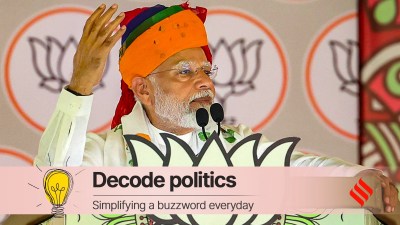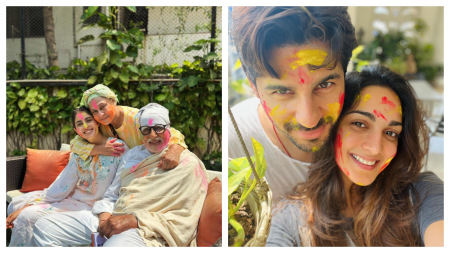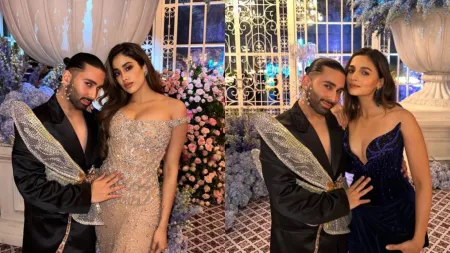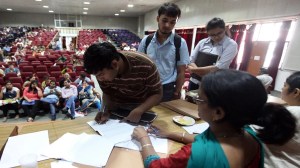- India
- International
Pink Psychedelia
Leading ‘90s producer-director Guddu Dhanoa, talks about his upcoming film called Gulabi and the complexity revolving the issue of dance bars
 Sachin Khedekar and Pakhi Hegde in a still from Gulabi
Sachin Khedekar and Pakhi Hegde in a still from Gulabi
By Aashay Khandehar
On April 12, 2006, the Bombay High Court struck down the amendment of the State government to ban dance bars, terming it unconstitutional. However, the light in which these bars were shown a few years ago does not seem to fade. Producer-director Guddu Dhanoa has decided to revive the topic; this time in favour of the bar dancers, with his Marathi film debut Gulabi.
Dhanoa, who has earlier directed Hindi films such as Ziddi and Aflatoon (1997), Salaakhen (1998) and Bichhoo (2000), has portrayed an explosive love story of a police officer and a bar girl in Gulabi. The film opens with a 17-year-old boy murdering his mother, for opposing his affair with a bar dancer. Investigating officer DCP Arjun Malvankar (Sachin Khedekar) then decides to take strict action against the dance bars, which he believes are the epicentres of crime in the city. Conflict arises when he meets Gulabi (Pakhi Hegde), a bar dancer, who challenges him to find the real criminals instead of punishing the innocent bar dancers. Set in 2005, the film addresses the complexity surrounding the dance bars and the possible ways of handling the situations that arise.
“I decided to do this movie in Marathi because the dance bars were largely based in Mumbai and its outskirts till a few years ago. This movie tilts towards feminism. As the protagonist Gulabi says in the movie, ‘Just like all police officers are not corrupt, all bar dancers aren’t prostitutes. They sell their art of dancing to make a living’,” says Dhanoa. The movie takes a twist when Gulabi swears that she will make DCP Malvankar throw money at her in the same dance bar which he is determined to shut.
In this clash of pride and ego, Dhanoa has shown the vulnerability of a police officer and the will-power of a bar dancer, which he says, is depicted inversely in most of the films. Talking about action or comic elements which are always the bread earners for producers, Dhanoa says, “There are no action or comedy sequences in Gulabi. Audiences across the country might say that the movie is dull without these two elements, but I believe that the Marathi audience is wise and patient.” To get the details right, Dhanoa says his team carried out elaborate research — from visiting the dance bars in Mumbai to ascertaining the perspectives of police officers raiding bars. “We studied the style of dancing in bars, the behaviour of customers and the atmosphere inside. Replicating it was a challenge, but I believe we have done it well,” adds Dhanoa.
Talking about the similarity of Gulabi with legendary movies such as Blue Angel (1930) and Pinjara (1972), Dhanoa says, “After seeing the trailer, one may think that the movie is inspired by these films. However, the themes are totally different. In Pinjara and Blue Angel, you see the downfall of a respectable professor. There is no question of a downfall here. Both DCP Malvankar and Gulabi are trying to justify their duties.”
The film is scripted by Sanjay Chauhan who has previously written movies such as I Am Kalam (2010), Paan Singh Tomar (2012) and Saahib, Biwi Aur Gangster (2011). While the songs have been written by Maya Govind and M Prakash, they have been composed by Dilip Sen and Santokh Singh Dhaliwal. Phulwa Khamkar has choreographed the dance sequences. The film also stars Vineet Sharma and late Vinay Apte.
Photos
Apr 23: Latest News
- 01
- 02
- 03
- 04
- 05








































